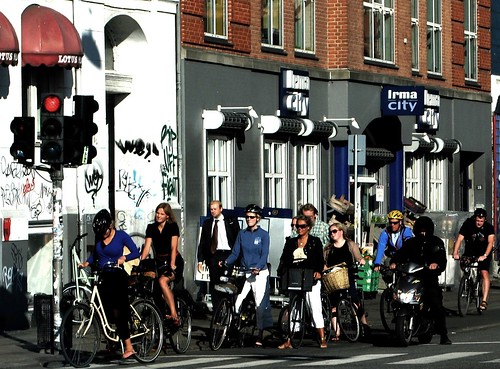
 Politics is all too predictable, all too often.Which is why a sudden and unexpected political decision is so welcome sometimes.
Politics is all too predictable, all too often.Which is why a sudden and unexpected political decision is so welcome sometimes.
The Mayor in charge of traffic and environment, Klaus Bondam, has a city hall majority behind in his proposal to close off a major artery into Copenhagen to through traffic.
Nørrebrogade is the name of the street and it has traditionally been one of the main routes leading to the ancient centre of the Danish capital. It is not particularly wide, given its history, and the street has long been congested with traffic.The proposal to close off the street to automobiles is radical and yet it is popular. With a political majority behind the plan it could be implemented already next year.The primary reasons for taking these drastic measures are simple. Decreasing pollution, increasing bike traffic and improving the lifeblood of the neighbourhood.As the head of the Danish Cyclist's Union says, "Cyclists are forced to squeeze together on the bike lanes. Especially older people don't feel comfortable riding, and the same goes for parents sending their kids out onto the bike lanes. In rush hour people ride at many different tempi and that can stress the slower cyclists".
Each day 75,000 people use the street. Of them only 15,000 are motorists, whereas 35,000 are cyclists, making this route one of the busiest in the city for bikes. This being Copenhagen there are bike lanes in both directions, but bicycle congestion makes it tricky riding this route. There is little room for making the bike lanes as wide as on other streets, so removing the motorised traffic is the only way to create safer bike lanes.
There are shouts of protest to be heard, most involving claims that the shops on the street will suffer from lost business. The same shouts were heard back in the 1960's and 1970's when Copenhagen began creating its vast network of pedestrian streets, at the expense of the car. Businesses didn't die. They thrived from the increase of pedestrians and cyclists. As we pointed out in an earlier post, cyclists are better shoppers than motorists, too.
One important angle is that upwards of 75% of the people who live in the neighbourhood don't own a car, but they most certainly own a bike or two. Why should they live with cars on their streets when they don't choose to own one?Innovation is not a foreign concept for Nørrebrogade. It was the inaugural street for the new Green Wave programme, where the traffic lights are coordinated for bike traffic for 2.5 km. If you ride 20 km/h you'll hit green lights the whole way. We posted about this earlier.It's exciting, to be honest. Because it's radical, visionary and promising. The street has long been half-dead, with only the side streets thriving. Now one of the main streets in the city will have a chance to bloom. Increasing bike traffic and improving quality of life for those who live there.
With Copenhagen having set the goal of being the world's environmental capital by 2015, this is an excellent start.
Read more about how many cyclists use the infrastructure in Copenhagen on this post: Daily Bike Traffic Volume in Copenhagen.





